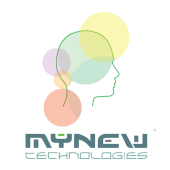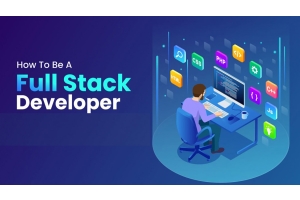We use cookies to make your experience better. To comply with the new e-Privacy directive, we need to ask for your consent to set the cookies. Learn more.

Full-stack development is one of the most versatile and sought-after skills in the tech industry. It involves building both the front-end (client side) and back-end (server side) of a web application, allowing developers to handle every aspect of a project. Mastering this skill requires knowledge of multiple languages, frameworks, and best practices to create dynamic, responsive, and scalable applications. This comprehensive guide will walk you through the tools, languages, and best practices required to become a full-stack developer.
Understanding Full-Stack Development
Full-stack development encompasses all layers of web development:
1. Front-End Development: This is the client side of the web application. It’s what users interact with directly.
Key Technologies:
- HTML (Hypertext Markup Language): The structure of web pages.
- CSS (Cascading Style Sheets): Styling and layout.
- JavaScript: Adds dynamic behavior to websites.
- Frameworks: React, Angular, and Vue.js for building modern interfaces.
2. Back-End Development: This involves building the server side of the web application where data is processed.
Key Technologies:
- Node.js: A runtime environment to execute JavaScript server-side.
- Python, Ruby, PHP: Popular back-end languages for server logic.
- Databases: MySQL, PostgreSQL, MongoDB for data storage and management.
3. Database Management: Data is the backbone of any application, and full-stack developers must understand how to interact with databases.
- SQL (Structured Query Language): For relational databases like MySQL.
- NoSQL Databases: Like MongoDB, for flexible, scalable databases.
The Front-End: Building User Interfaces
Mastering the front-end starts with understanding HTML, CSS, and JavaScript, which form the core building blocks of web development. Modern frameworks like React, Vue, and Angular make it easier to build complex user interfaces.
HTML & CSS: Every web page starts with HTML and CSS. HTML provides the structure, while CSS handles the look and feel.
JavaScript: As the core programming language for the web, JavaScript controls the interactive elements of a site.
Front-End Frameworks: Frameworks like React help developers manage complex UI logic efficiently with reusable components.
The Back-End: Handling Data and Server Logic
The back-end of an application deals with databases, server logic, and APIs (Application Programming Interfaces) that connect the front-end and back-end.
- Node.js: As a JavaScript runtime, Node.js allows developers to use a single language (JavaScript) for both the client and server sides of development.
- Express.js: A lightweight web application framework for Node.js, it simplifies building robust back-end applications.
Python: Another excellent option for back-end development, widely known for its simplicity and efficiency.
Database Management: Working with Data
Full-stack developers must understand how to structure, store, and manage data effectively. Choosing the right database depends on the project’s needs.
- SQL Databases: Best for structured data that requires complex querying. Commonly used SQL databases include MySQL and PostgreSQL.
- NoSQL Databases: Ideal for flexible, unstructured data. MongoDB is one of the most popular NoSQL databases used by full-stack developers.
Best Practices for Full-Stack Development
To become a proficient full-stack developer, it's essential to follow best practices that ensure your applications are scalable, maintainable, and secure:
- Version Control: Use Git for version control to keep track of changes in your codebase and collaborate with other developers.
- RESTful APIs: Build APIs that allow the front-end and back-end to communicate efficiently.
- Security: Implement security best practices, including encryption, authentication, and validation to protect user data.
- Testing: Write unit tests and integration tests to ensure that each part of your application works as expected.
The Full-Stack Developer Roadmap
Becoming a full-stack developer requires knowledge across a wide range of technologies. Here's a roadmap to help guide your learning:
- Start with Front-End: Learn HTML, CSS, and JavaScript. Master a front-end framework like React or Angular.
- Move to Back-End: Understand server-side programming with Node.js, Python, or PHP. Learn about databases and how to interact with them.
- Practice Full-Stack Projects: Build small projects that combine both front-end and back-end technologies. Examples include creating a personal blog or an e-commerce site.
- Learn Version Control: Git is an essential tool for every developer. Make sure to practice with GitHub to host your projects.
- Continuous Learning: Full-stack development is constantly evolving. Stay updated with the latest trends and best practices in the field.
Real-World Applications of Full-Stack Development
Full-stack developers are in high demand, and their skills can be applied to a variety of industries:
- E-commerce Platforms: Full-stack developers build the entire architecture for e-commerce sites, from user interfaces to payment processing and inventory management.
- Social Media Platforms: Platforms like Facebook and Twitter rely on full-stack development for both user-facing features and server-side data management.
- Web Applications: Full-stack developers create SaaS (Software as a Service) platforms, which require expertise in both front-end user experience and back-end functionality.



